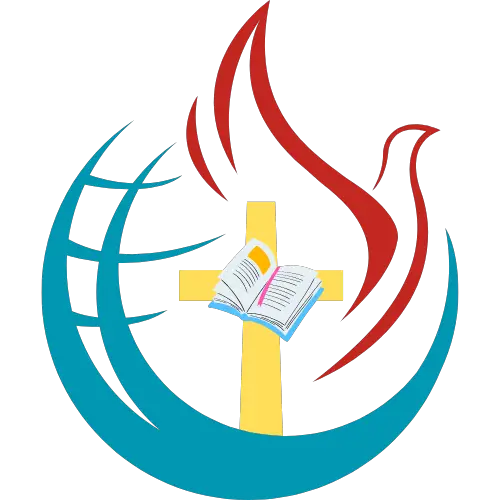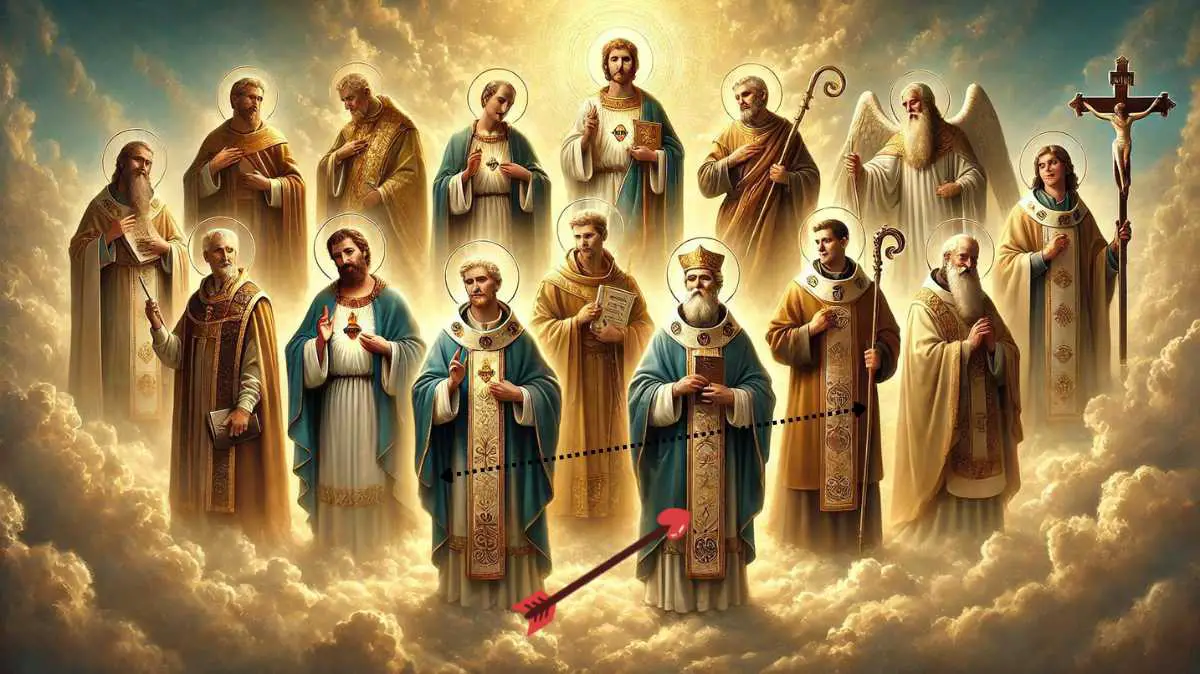Throughout the centuries, patron saints have played a pivotal role in the spiritual lives of people worldwide. These revered figures are seen as heavenly advocates who provide protection, guidance, and intercession to individuals, professions, nations, and causes. The concept of patron saints transcends religious denominations, serving as a vital component in Christian faith, especially within Catholicism, Orthodoxy, and Anglicanism. In this article, we will delve deep into the fascinating history, importance, and influence of patron saints. Whether you’re new to the topic or seeking deeper understanding, this comprehensive guide will offer a thorough exploration.
Table of Contents
1. What is a Patron Saint?
A patron saint is considered a spiritual protector or advocate for specific individuals, groups, causes, or even entire countries. In Christian tradition, they are believed to intercede before God on behalf of those they protect or who pray for their help. Each saint is often linked to certain aspects of life, such as occupations (e.g., St. Matthew for accountants) or ailments (e.g., St. Agatha for breast cancer patients).
Patron saints are chosen based on their life’s deeds, trials, and what they symbolically represent. Their unique connection to certain professions, places, or needs derives from their personal history, legendary acts, or miracles performed during their lifetime.
2. Historical Origins of Patron Saints
The concept of patron saints is rooted in early Christian history. During the times of early Christianity, when followers were often persecuted, the saints who suffered martyrdom were venerated by the Christian community. Martyrs were believed to be exceptionally close to God, and early Christians would often invoke their intercession.
The veneration of saints gradually expanded from martyrs to other individuals who demonstrated exceptional holiness and virtue. Over time, these holy individuals became patrons, offering special protection over people and places. The earliest recorded instance of assigning patronage dates back to the 4th century, when entire towns and cities began venerating certain saints as their protectors.
3. Roles and Responsibilities of Patron Saints
Patron saints serve multifaceted roles within both religious and secular contexts:
- Intercession: The primary role of a patron saint is to intercede before God on behalf of those they protect.
- Protection: Patron saints are called upon to safeguard individuals or groups from harm.
- Guidance: Through prayers and devotions, many believe that saints provide spiritual and moral guidance.
- Inspiration: The lives of patron saints often serve as a model of virtue and resilience for those who venerate them.
4. How Patron Saints Are Chosen
Not all saints automatically become patron saints. The process of assigning a saint’s patronage involves a combination of historical associations, popular devotion, and ecclesiastical endorsement. For instance, Saint Francis of Assisi is known as the patron saint of animals and ecology due to his profound love for nature and all living creatures.
The process can also be a more organic one. Over time, certain saints become naturally associated with particular groups through a tradition of veneration. In more recent times, organizations, cities, and even nations can petition the Vatican to officially designate a particular saint as their patron.
5. The Patronage of Professions
One of the most intriguing aspects of patron saints is their close association with specific professions. These saints offer intercession and protection over those who work in these fields. For example:
- St. Luke: The patron saint of physicians and artists.
- St. Joseph: The patron saint of carpenters and workers.
- St. Cecilia: The patron saint of musicians.
Throughout history, professionals and workers have often turned to these saints for protection, inspiration, and guidance in their daily lives.
6. The Role of Patron Saints in Different Cultures
Patron saints are not limited to any single culture or nationality. Across the world, the veneration of saints has adapted to various traditions:
- In Italy, many towns have their own patron saints. Festivals and processions are common, celebrating the protection of these saints.
- In Ireland, Saint Patrick stands as the patron saint of the entire country, and his feast day is celebrated worldwide.
- In Latin America, devotion to saints often merges with indigenous customs, resulting in vibrant and unique practices.
Each culture adapts the tradition of saints to reflect its values, often blending historical saints with local beliefs and customs.
7. Famous Patron Saints and Their Stories
Some patron saints are widely known due to their extraordinary lives and deeds. A few famous examples include:
- St. George: The patron saint of England, often depicted slaying a dragon to save a princess. His story symbolizes the triumph of good over evil.
- St. Joan of Arc: The patron saint of soldiers and France, known for leading French forces to victory during the Hundred Years’ War, and later canonized for her unwavering faith and martyrdom.
- St. Teresa of Ávila: The patron saint of writers and Catholic reformers, celebrated for her deep mystical writings and reform efforts within the Carmelite Order.
8. The Role of Patron Saints in Modern Life
Despite modern advancements and a more secular worldview in many parts of the world, patron saints remain a significant part of spiritual life. Individuals still turn to saints for guidance, particularly in times of crisis or need. Whether it’s a doctor praying to Saint Luke before surgery or a student invoking Saint Joseph of Cupertino before exams, saints continue to play a role in daily lives.
Patron saints have also become an integral part of Catholic confirmation, with individuals selecting a saint to serve as their personal guide throughout life. Today, discovering your personal patron saint has even become a popular practice, helping people connect more deeply with their faith. You can find out who your patron saint might be by taking a quiz such as this one on patron saints.
9. Personal Patron Saints: How to Find Yours
Selecting a personal patron saint is a deeply spiritual process that often involves reflection on one’s values, profession, or areas of need. Many individuals choose a saint who exemplifies virtues they admire or who experienced challenges similar to their own.
Additionally, certain people are named after saints, and it’s common to venerate the saint after whom you were named. Others find a deep connection through reading about saints’ lives or visiting places associated with their relics.
10. How Patron Saints Are Honored
The veneration of patron saints is expressed in a variety of ways:
- Feast Days: Each saint is commemorated on their feast day, which usually marks the day of their death or martyrdom.
- Prayers and Novenas: Many devout followers pray novenas (a series of prayers over nine days) or offer specific prayers for intercession.
- Processions and Festivals: In many countries, particularly in Southern Europe and Latin America, elaborate festivals are held to honor patron saints, complete with parades, music, and food.
11. Miracles and Intercession: Patron Saints’ Role in Prayer
Patron saints are often credited with performing miracles through their intercession. These can range from physical healings to protecting people in dire situations. Throughout history, saints have been invoked to help avert natural disasters, protect nations during wars, and guide individuals through personal hardships.
12. The Influence of Patron Saints in Art and Culture
From medieval paintings to modern sculptures, patron saints have served as inspiration for countless artists. Their stories have been immortalized in some of the world’s most famous works of art, including frescoes, sculptures, and stained glass windows. These depictions not only honor the saints but also educate the faithful on their virtues and deeds.
13. Debates and Criticisms Around the Veneration of Patron Saints
While veneration of patron saints is a widely accepted practice in Catholicism and Orthodoxy, it has faced criticism, particularly from Protestant denominations. Critics argue that the practice detracts from the worship of God and can lead to idolatry. However, those who venerate saints argue that these holy individuals are not worshipped but rather serve as intermediaries between the faithful and God.
14. The Future of Patron Saints in an Increasingly Secular World
As societies around the globe become more secular, the role of patron saints faces both challenges and transformations. While fewer people may adhere strictly to religious traditions, the cultural significance of saints persists. The stories of patron saints continue to inspire acts of charity, heroism, and compassion, regardless of religious affiliation.
15. FAQs about Patron Saints
What is the purpose of a patron saint?
A patron saint offers protection, intercession, and guidance to individuals, groups, or causes.How do you choose a patron saint?
Many choose a saint based on shared values, profession, or challenges. Others may select a saint after whom they were named or a saint whose life story resonates with them.Do non-Catholics have patron saints?
While patron saints are primarily a feature of Catholicism, other denominations, such as Orthodoxy and Anglicanism, also venerate saints.Can I have more than one patron saint?
Yes, it’s common for individuals to venerate multiple saints for different aspects of their lives.What are feast days?
Feast days are celebrations in honor of a saint, often marking their death or significant event in their life.How do patron saints help in daily life?
Many believe that saints offer spiritual guidance, protection, and intercession in personal challenges and professional matters.
Author

Alona Smith is a devoted follower of Jesus Christ who believes that life’s true purpose is found in knowing Him and making Him known. She is passionate about sharing God’s Word with clarity and compassion, helping others see the beauty of the gospel of grace revealed through the Apostle Paul.
Grounded in Scripture and led by the Spirit, Alona seeks to live out her faith in practical ways—showing kindness, extending forgiveness, and walking in love. Whether serving in her local church, encouraging a friend in need, or simply living as a light in her community, she strives to reflect Christ in both word and deed.

